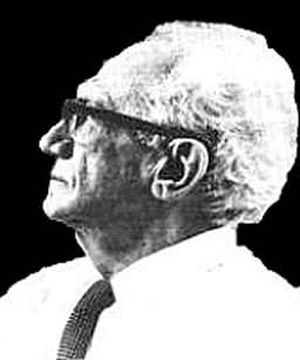Chaos and Creation: An Introduction to Quantavolution in Human and Natural History (1981) is a book Alfred de Grazia that describes itself as a:
“.. book is designed to show that a typical scientist may hold untenable positions on five major issues: the ordering of the solar system; the genesis of God; the fashioning of the surface of the earth; the evolution of mankind; and the origins of culture. The chapters that are to come assert that all of these processes may have occurred in a short interval of time in association with a set of natural catastrophes. The world has changed by great abrupt movements. with far-ranging effects. This story, and the theory used to organize it, are here called “quantavolution” and “revolutionary primevalogy.” They contrast with “evolutionary primevalogy.”[1]Alfred de Grazia, Chaos and Creation: An Introduction to Quantavolution in Human and Natural History (1981) Metron Publications. Page 8. ISBN 0-940268-00-0 ISBN 978-0-940268-00-5
Prominent Catastrophists since the Beginning of Modern Science
In Chaos and Creation, de Grazia identifies the following individuals as prominent catastrophists, together with the date of significant publication:
- Giordano Bruno (1584)
- William Whiston (1719)
- Giambattista Vico (1730)
- Nich.-Ant. Boulanger (1766)
- Giov. R. Carli-Rubbi (1780)
- Georges Cuvier (1826)
- William Buckland (1824)
- Ignatius Donnelly (1883)
- Isaac Vail (1905)
- Hans Hoerbiger (1913)
- George McCr. Price (1926)
- W. Comyns Beaumont (1932)
- Howard B. Baker (1932)
- Hans Bellamy (1936)
- Claude Schaeffer (1948)
- Immanuel Velikovsky (1950)
- A. Kelly & F. Dachille (1953)
- Hugh A. Brown (1967)
- Melvin Cook (1966)
- Donald Patten (1966)
- Charles Hapgood (1970)
de Grazia notes that:
“The list excludes the work of lesser-known and mostly younger quantavolutionists. I. Velikovsky, Ralph Juergens, Livio Stecchini, Gilbert Davidowitz, and Zvi Rix have recently died, leaving many unpublished manuscripts. A few of the scholars who are currently active are Robert Bass, John Bimson, Dwardu Cardona, William Corliss, Eric Crew, Frank Dachille, Eva Danelius, Ragnar Forshufvud, Brendan O’Gheoghan, Stephen Gould, Lewis Greenberg, George Grinnell, Peter James, Julian Jaynes, Frederic Jueneman, Allan Kelly, Alexander Kondratov, Malcolm Lowery, Christoph Marx, Earl Milton, Brian Moore, William Mullen, G. van Oosterhout, Alan Parry, C. J. Ransom, M. G. Reade, Lynn Rose, Eddie Schorr, Martin Sieff, Warner Sizemore, David Talbott, S. K. Vsekhsvyatskii, Robert Wescott, Irving Wolfe, and Jerry Ziegler; j’en passe et des meilleurs. Also the Creation Research Quarterly group (Ann Arbor, Mich.); the group of the Society for Interdisciplinary Studies (England); the Kronos group (Glassboro College, N.J.); the Lethbridge University, Canada, group (E. R. Milton). and the Catastrophist Geology group (Rio de Janeiro, H. Kloostermann). Nor does the table include the “Ancient Astronaut” school (Robert Temple, Erich von Däneken) or “life on other planets” students (Carl Sagan), or contemporary “flying saucer” discussants, or “biblical literalists.” Furthermore, the list does not include many scientists, such as C. E. R. Bruce, D. Ager, H. Urey, J. Lamar Worzel, or C. Emiliani, who use catastrophe to explain important episodes of natural history.”
Table of Content
- Forward
- Introduction: Quantavolution vs. Evolution
The Uniformitarian Resistance; Quantavolution by Catastrophe
- Chapter One: Cosmic Instability
Impacts on Earth; The Cleavage of Mars: A Particular Case.
- Chapter Two: High Energy from Space
Heavy-Body Impacts: Seismism and Volcanism; Fire and Gases; Dense Fall-Out; Pandemonium and Darkness; The Battle over Time; The Quantavolutionary Column; The Exponential Principle; Revolutionary Integration of the Cosmos.
- Chapter Three: Collapsing Tests of Time
Rapid Sedimentation; Coral Reefs; Radiodating; Radiation Turbulence; Potassium-Argon Dating; The Radio-Halo Problem; Radiocarbon (Carbon-14) Dating; Tree-Ring Time; Magnetism; The Fossil Record and Mutating Time; Cycles and Anniversaries; 58 Tests in Dispute; The Dissolution of Time; Of Mammonths and Amber.
- Chapter Four: A Catastrophic Calendar
The Number of Catastrophes, Why 14,000 Years?
- Chapter Five: Solaria Binaria
The Stacked Binary System; Decline of the Electric System; The Break-up of Super-Uranus; Planetary Behavior; Completion of the Transformation; The World of Pangea; The Sky-Watches; Early Astronomical Ideas; Summary Reflections upon the Changing World System.
- Chapter Six: The Uranians
The Destruction of Pangea: The First Chaos; The Ice Dumps; The Creation of Man; Religious Beginnings; Birth of the Heavenly Host; Ecumenical Culture; Old and New World Concordances; Climate Changes and Time; Puzzles of Tihuanacu; Signs of Uranian Culture; Hand, Rod, and Snake.
- Chapter Seven: Earth Parturition and Moon Birth
The Passage of Uranus Minor; Contributing Theories and Eruption Dynamics; Lunar Conformities to Eruption; The Global Fracture System; The Tethyan Welt; Global Expansion; The Magnetic Field; Ocean Development; Lunar Worship; Sunken Lands; Legendary Chaos and the Moon; The Moon in Meso-America; Western Europe; The Near East; A Question of Lunar Priority; Eliade’s “Lunar Perspective”; The Menstrual Cycle; The Heavenly Spinner.
- Chapter Eight: Saturn’s Children
The Pleiades; The Triumph of Saturn; The “Golden Age” The Peoples of Saturnia; The Downfall of Saturn; Nova and Deluge; The Poseidon Phase; Survivors and Saturnalia.
- Chapter Nine: The Olympian Rulers
The Devil Seth; The Bonds of Saturn and Jupiter; The Lightning God; The Behavior of Planet Jupiter; End of the “Golden Age”; Monumentalism; Repeated Disasters; Gods Not Invented; Apollo Explosion and Asteroids; Mercury; Mercury’s Geophysics.
- Chapter Ten: Venus and Mars
Career of an Androgyne; The Heat of Venus; Hundres of Identities; The Plot of the Iliad; Global Ruination and its Perpetrator; The Devi and the Mexican Ballplayer; A Longer Day; The Explosion of Thira; Martia; Carpenter’s “Soft” Catastrophism; Nergal, the “Treacherous Dealer”; Worship of Mars; The Wounds of Planet Mars; The Greek “Dark Ages”.
- Chapter Eleven: The Devil’s Advocate
- Chapter Twelve: Victory of The Sun
Sun and Science; Forebodings; The Propensity to Survive.
- Bibliography
External Links
- Chaos and Creation (Text in full)
References
| ↑1 | Alfred de Grazia, Chaos and Creation: An Introduction to Quantavolution in Human and Natural History (1981) Metron Publications. Page 8. ISBN 0-940268-00-0 ISBN 978-0-940268-00-5 |
|---|

